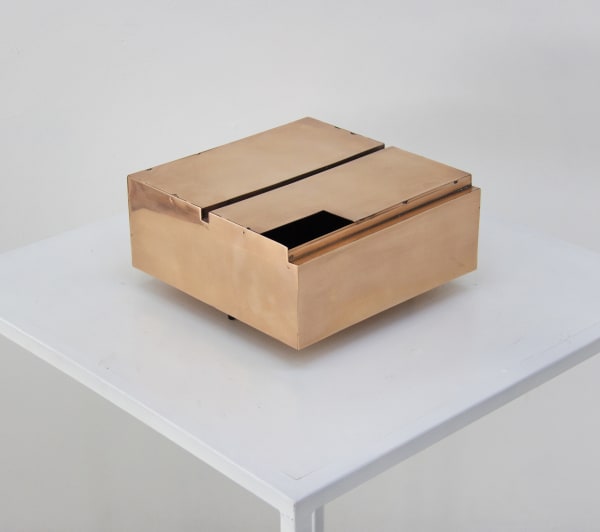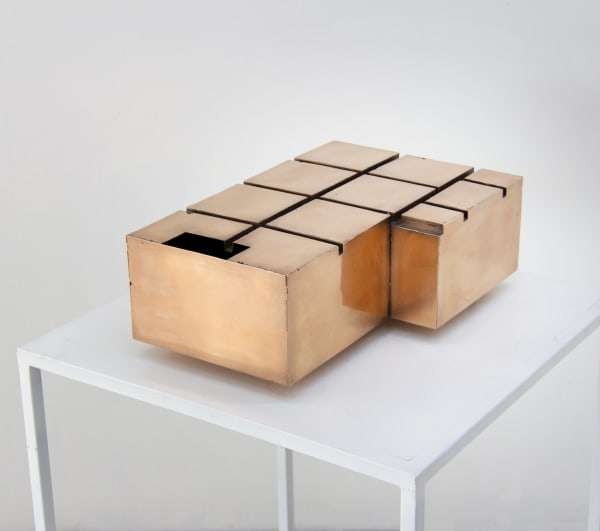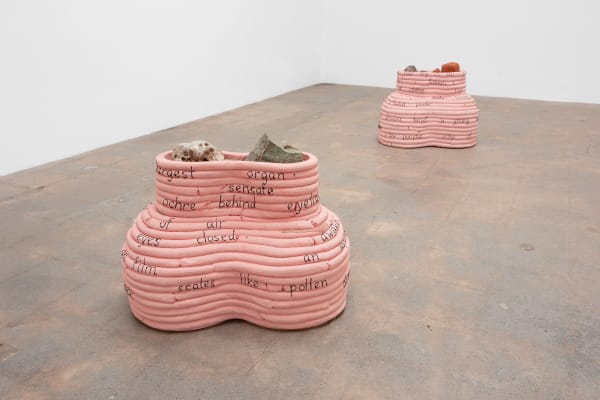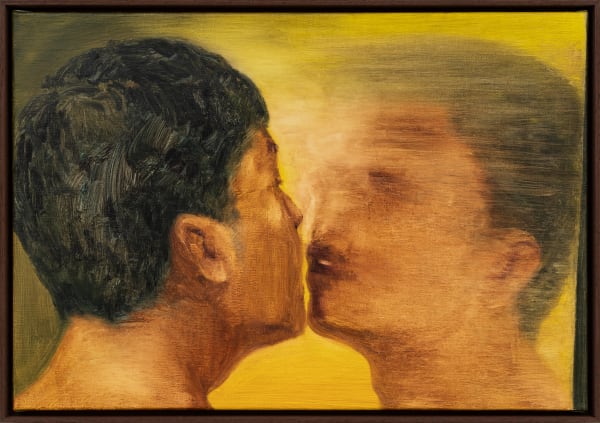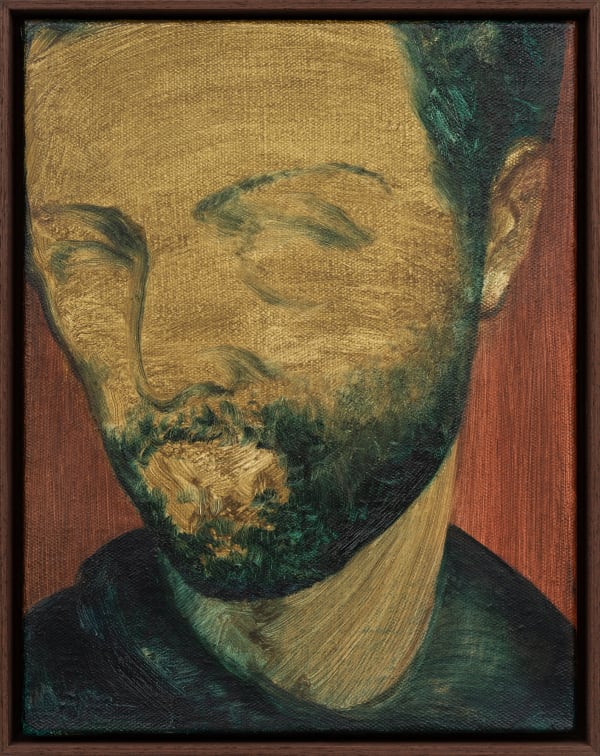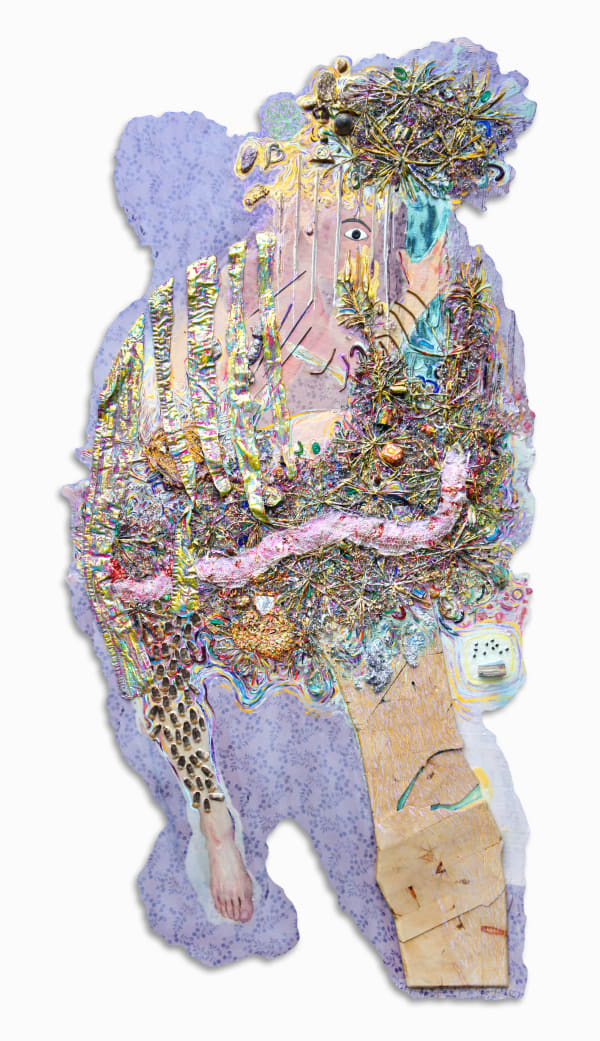-

26 February – 26 March 2022
Organized by Danielle Shang
Galerie Marguo is pleased to present The Hearing Trumpet, Part I, the first installment of a group exhibition gathering artists of Asian descent from the Americas and Europe. The title of the exhibition is adopted from the late Leonora Carrington’s fantastical novel The Hearing Trumpet (1974).
The participating artists include Pio Abad, Naotaka Hiro, Pearl C. Hsiung, Ce Jian, Yeni Mao, Tammy Nguyen, Anna Sew Hoy, Sean Shim-Boyle, XIE Lei, ZHANG Yunyao, and Ye Qin Zhu. Their works span all disciplines and articulate negotiations of multiple and sometimes clashing histories and identities, the processing of trauma and new awareness, and different notions of temporalities and spatialities that are informed by personal memories, collective experiences, and conceived in different social and cultural contexts.
-
-

Leonora Carrington, The Giantess, 1947
Cover artwork of Carrington's novel
-
PARTICIPATING ARTISTS
-
The eleven artists’ eloquent articulations — expressed through material, object, mark-making and formal language — are resulted from their critical quest into the past and imaginative investment in the present. Collectively, The Hearing Trumpet presents a site of fecund artistic and curatorial experimentation on diverse ways in search for knowledge and memory, as well as a space for us to make our own claims within the global narratives of contemporary art, highlighting both hybridity and contradiction, in a hope to encourage future projects that challenge the stereotypes about artists of Asian descent and enable a critical dialogue with the East and the West.
This exhibition is also a celebration of the creative agency that pushes the limits to re-imagine possibilities for representation, visibility and inclusivity. At the heart of The Hearing Trumpet is the collaborative spirit of community organization that has armed us to survive colonialism, racism, inequality, atrocities and natural disasters. In times of great uncertainty, we hope our presentation will radiate massive optimism and lift up all of us.
-
Yeni Mao
-
Yeni Mao’s copper vessels reflect his investigations into architecture as the negative space that holds cultural memories, particularly the forgotten history of Asian immigrant laborers at the borders between Mexico and the US. His hanging sculpture presents the agency of materials, as well as layered readings imbued into an object.
-

-
"The works fig 21.01 Calle Ignacio Manuel Altamirano 268 and fig 21.02 Calle Jose Azueta 271 are 1:25 models of the inside surfaces of two basements in Mexicali. These two basements are presented as parts of an extensive tunnel system built under Mexicali/Calexico at the beginning of the 20th century, when the population of the city swelled with Chinese and Chinese-Mexican laborers.
With the rebuilding of the basements came a performative aspect, a certain intimacy with the space. This provided an alternative access to this history based solely in form, the building systems, and architectonic decisions. How does architecture hold memory, what is the presentation of history, and for whose gaze? The access to this history is shaped by those who would own the knowledge of the tunnel systems. The spectacle becomes the history, and perhaps contrary to intentions, renders the history opaque and impenetrable."
— Yeni Mao
-
Pio Abad
-
Pio Abad’s practice is similarly concerned with the socio-political and historical significance embedded in objects. Decoy (2015), a seashell-encrusted CCTV camera, and 105 Degrees and Rising (2015), a wallpaper designed with the US military camouflage and the image of a pinup girl, examine imperialist aggression through military power and soft power in geopolitical conflicts in Southeast Asia.
-

Pio Abad
Notes on Decomposition Lot No. 235 (diptych), 2022
Ink and gouache on paper
Each 59.4 x 42 cm / 67.4 x 50 cm (framed)
In his series, Notes on Decomposition, Abad attempts to map our current state of cultural disenchantment through objects bought, sold and sequestered from 1991 to the present – objects that embody specific moments of political and economic decay over the past twenty years, to become an inventory of neoliberal fantasy through decorative things.
The pair of elephant figurines depicted in Notes on Decomposition (Lot No. 235) anddescribed in the Christie’s auction catalogue as Chinese export Canton famille rose porcelain elephant-form candle holders, once occupied a pride of place in Ronald Reagan’s private residence at the White House and were subsequently auctioned off in 2016, shortly after the death of Nancy Reagan. The Reagans had a vast collection of elephant figurines, the animal that has been conscripted by the Republican Party as its official symbol since 1864.
-
Tammy Nguyen
-
Interrogations into the colonial past are also present in Tammy Nguyen’s paintings, which deconstruct the appropriated stereotypical imagery of Marlboro cowboys in the predatory campaign that swept not only the US but all of Asia with motifs of tropical vegetation.
-
"Dick and Jack are two cowboy paintings modeled off of Marlboro men and named after Richard Nixon (Dick) and John F. Kennedy Jr. (Jack), two defining 'cowboys' of the Cold War and of course the proxy war known as Vietnam. In my rendering, their faces are swarmed with insects and military aircrafts of the tropics. I am thinking about the scale of Man’s imagination, both it’s might and minuscular depth."
— Tammy Nguyen
-
-
Naotaka Hiro
-
Feeling the weight of the illness of COVID-19 and the surrounding political and cultural turmoil, Naotaka Hiro’s two paintings on plywood panel explore his own body part by part to process anxiety and confusion brought on by the pandemic.
-
Naotaka Hiro approaches all of the wood paintings in a very specific way; placing it about two feet above the ground he gets underneath them to make the initial imagery, and then flips the piece over looking at it from above, refining the image to completion. The characteristics of the two-part process are distinct. The first step is subjective, instinctive, and organic, mostly drawing with graphite. In contrast, the second step is objective and sober, akin to editing or post-production. Hiro goes back and forth between the steps he takes in making these wood panels here.
-
-
Sean Shim-Boyle
-
Perhaps no one in the exhibition pays closer attention to the state of physical well-being than Sean Shim-Boyle, who has struggled with a rare heart condition. Like EKG sensors adhering to the skin to record cardiac activity, his text-based installation clings to the wall and spells out lubs and dubs — the rhythm of heart beats.
-

-
Ce Jian
-
Ce Jian’s Lolly (2021) also addresses the human body, but focuses instead onits mechanical structure and the constructed visual culture of beauty. Elsewhere, Pearl C. Hsiung’s surrealist inspired paintings reference geological bodies that have been granted environmental personhood, ascribing human status to nature and underlining the anthropocentric logic in our belief system.
-

-
-
Pearl C. Hsiung
-
"Both They (Taranki Falls) and They (Gomukh) reference geological bodies that have been granted environmental personhood, a conservation strategy that legally designates these entities the status of a person with rights enforceable by law. Ascribing human status to nature reveals and muddies the distinction between human and non-human and highlights the range that anthropocentric logic reaches in order to sustain an anthropo-friendly ecology.
Depicting liquid landscapes in their active and morphing natural and personhood states, these two paintings conjure the inescapability of the artificial as woven into earthly matter; into the air, water, earth as well as the flesh of human and more-than-human. The various planes, plates, and concepts collapse onto the painted surface obscuring the lines between human, nature and artifice."
— Pearl C. Hsiung
-
-
ANNA SEW HOY
-
Anna Sew Hoy’s ceramics are adorned with personal items and fragmented texts, which not only index the process of clay making but also suggest personal memory, bodily sensations and intimacy.
-
-
Coupled Aspiration consists of two identical peach-pink coil-built vessel set in close proximity represent a couple in relationship. There is an intimate rock garden within each vessel. The coils of clay become lines on a sheet of paper. The viewer has to circle around and around each piece in order to read the words, which are accessed in bits and phrases.
Recurrent Interim is a wall work that serves as a memento of a summer afternoon at the beach. Symmetry appears by the fact of the piece’s smaller asymmetries. The strings and notions are lines of a story punctuated by shells and stones found on the sand. The glaze pour is a wave receding and returning to wet your ankles.
— Anna Sew Hoy
-
Xie Lei
-
The sense of intimacy is also what XIE Lei’s quiet yet psychologically charged portraits elicit. The characters in the paintings seem confronted by an unsettling dual reality and cognitive dissonance within their inner selves.
-
-
YE Qin Zhu
-
Ye Qin Zhu’s highly texturized mix media triptych, inspired by temple reliefs and iconography, can be understood as a blueprint of the transmission of belief systems, cosmologies, and cultural legacies.
-

"I am interested in the movement of belief systems, this is inspired by temple reliefs. Whole worlds, cosmologies, legacies, and cultures are erected in the blue prints. The Triptych holds a story that is felt through transmission.
Reason Trail is about being propelled into motion, incessantly doing, while the reasons trail the actions. The obscured figure is looking away from the viewer and off to the right—towards the future with urgency and rush. The psyche is buried but still the driver.
Sight, Taste, Appetite is about drive. The figure is life size and facing the viewer with acknowledgment and reflection. What we see, our tastes and appetites, are fed to and through us. The materials, images, and media in the painting are engulfed in our collective flames.
In Searching the Loop, the underpainting is a rorschach test, on top are wooden pyramids pointing at the viewer, suggesting to look inwards. When we run up against walls of fire, it’s a chance to reflect on our actions and the things that drive us. How do we become aware of our cycles and how do we transform them?"
— Ye Qin Zhu
-
ZHANG Yunyao
-
-
ZHANG Yunyao's paintings on felt that are created from a slow and meticulous process of drafting and rubbing immortalize images by luminaries in Western art history.
-

"After completing the four felt paintings of torsos belonging to sculptures from different periods and places, I began to rethink some of the most frequent questions that arose during the creation of these works: who are these sculptures of? And who shaped these sculptures?
Of course, these two questions are easy to answer. But hidden beneath them is perhaps a more interesting question to consider: what are the intentions of the Chinese (versus occidental) artist who uses his own practice to depict the classical sculptures of European antiquity?
Conflicting histories and identities, as well as positions in different social and cultural contexts, may not be the concern of all artists, but they are nevertheless always present in an artist's reflections. I would like these four works, and the questions they provoke, to engage with and interrogate the subject matter of the exhibition they are included in, and to perhaps suggest new possibilities that exist beyond the binary of East and West."
— Zhang Yunyao
-
-
-
-

Portrait of Danielle Shang
-
Subscribe Newsletter
Be the first to know about new exhibitions, artist updates, as well as books and more. Sign up for our newsletter below.














